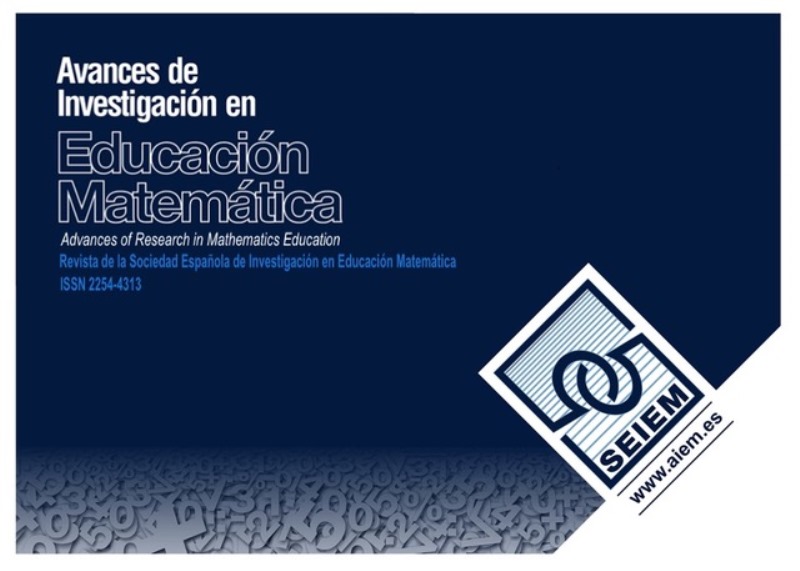Analysis of the teaching of dispersion measures in secondary school textbooks
DOI:
https://doi.org/10.35763/aiem.v0i16.232Keywords:
Textbooks, dispersion measures, secondary education, semiotic conflictAbstract
The aim of the study described is to analyze how the dispersion measures are presented in the didactic units of Statistics, in a sample of 12 textbooks corresponding to 3rd and 4th year of Compulsory Secondary Education. In order to select the sample, we studied which books were used in the public schools, choosing the four most frequently employed according to the grade, distinguishing between 3rd and 4th grades, and taking into account the double optionality (A and B) in the 4th grade. We applied the onto-semiotic approach for our analysis. More specifically, we analyzed the five primary mathematical objects along with which
the subject is presented: language, concepts, procedures, arguments and propositions. We found differences in texts for either one grade only or several different grades. Possible semiotic conflicts arising from the use of the analyzed texts are also explained.
Downloads
Downloads
Published
How to Cite
Issue
Section
License
The articles published in this journal are under a license Creative Commons: By 4.0 España from number 21 (2022).
Authors who publish with this journal agree to the following terms:
- Authors retain copyright and keep the acknowledgement of authorship.
- The texts published in this journal are – unless indicated otherwise – covered by the Creative Commons Attribution 4.0 international licence. You may copy, distribute, transmit and adapt the work, provided you attribute it (authorship, journal name, publisher) in the manner specified by the author(s) or licensor(s). The full text of the licence can be consulted here: http://creativecommons.org/licenses/by-nc/4.0.
- Authors are able to enter into separate, additional contractual arrangements for the non-exclusive distribution of the journal's published version of the work (e.g., post it to an institutional repository or publish it in a book), with an acknowledgement of its initial publication in this journal.
- Authors are permitted and encouraged to post their work online (e.g., in institutional repositories or on their website) prior to and during the submission process, as it can lead to productive exchanges, as well as earlier and greater citation of published work (See The Effect of Open Access).









